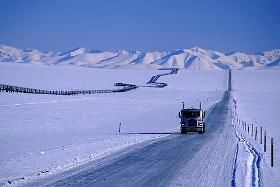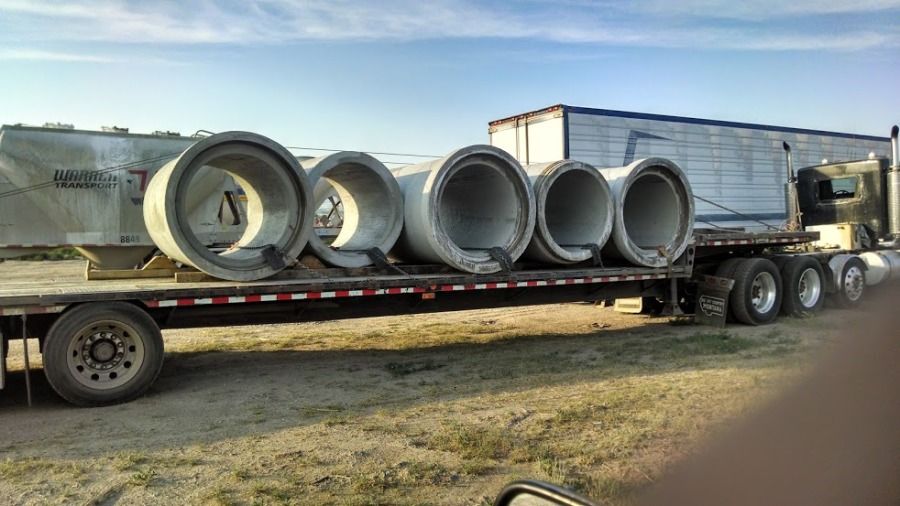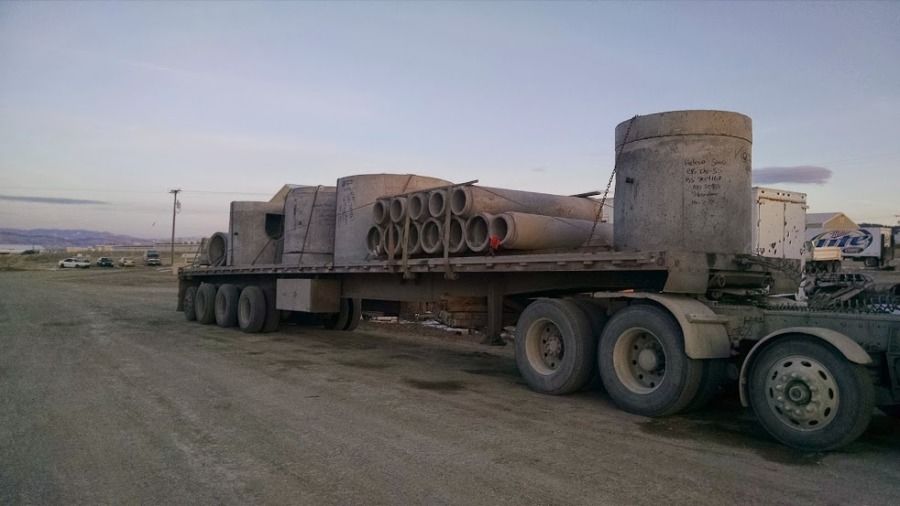Flatbed Load Securment Question
Topic 9033 | Page 1

Is it possible that you did not see the lengthwise securement?
See: Driver's Handbook
CSA:
Compliance, Safety, Accountability (CSA)
The CSA is a Federal Motor Carrier Safety Administration (FMCSA) initiative to improve large truck and bus safety and ultimately reduce crashes, injuries, and fatalities that are related to commercial motor vehicle
FMCSA:
Federal Motor Carrier Safety Administration
The FMCSA was established within the Department of Transportation on January 1, 2000. Their primary mission is to prevent commercial motor vehicle-related fatalities and injuries.
What Does The FMCSA Do?
- Commercial Drivers' Licenses
- Data and Analysis
- Regulatory Compliance and Enforcement
- Research and Technology
- Safety Assistance
- Support and Information Sharing
DOT:
Department Of Transportation
A department of the federal executive branch responsible for the national highways and for railroad and airline safety. It also manages Amtrak, the national railroad system, and the Coast Guard.
State and Federal DOT Officers are responsible for commercial vehicle enforcement. "The truck police" you could call them.
Fm:
Dispatcher, Fleet Manager, Driver Manager
The primary person a driver communicates with at his/her company. A dispatcher can play many roles, depending on the company's structure. Dispatchers may assign freight, file requests for home time, relay messages between the driver and management, inform customer service of any delays, change appointment times, and report information to the load planners.Thank you Michael! I am certainly not well educated all the flat bed rules regarding securment. Just made me a little nervous seeing those big heavy tubes just lying there.
Thanks for setting me straight
HOS:
Hours Of Service
HOS refers to the logbook hours of service regulations.
My opinion: appearances mean a lot. Even if it's legal, I wouldn't want a DOT officer who is not as familiar with the rules to look at it and have even an inkling of a doubt; that's all he would need to pull you in. Then you're getting into an argument with him, proving your case, making him feel dumb and upset, and now he wants to go level 1 on your @$$. I personally would choose to avoid all that by taking 5 minutes extra to make it look better
DOT:
Department Of Transportation
A department of the federal executive branch responsible for the national highways and for railroad and airline safety. It also manages Amtrak, the national railroad system, and the Coast Guard.
State and Federal DOT Officers are responsible for commercial vehicle enforcement. "The truck police" you could call them.
OOS:
When a violation by either a driver or company is confirmed, an out-of-service order removes either the driver or the vehicle from the roadway until the violation is corrected.
Heavy C, yeah those things are kind of strange. They should have a length wise cable or chain or something like that along the top running down the length of the load.
Pat hauls those things sometimes. They will have a tendency to "walk" around on you, so they need to be checked on a regular basis.
HOS:
Hours Of Service
HOS refers to the logbook hours of service regulations.
I will explain that when I get home. Looks like it needs more but works well
Hey I don't flatbed so I'll be the first to give the benefit of the doubt to this guy who does. Without knowing the exact rules I was a little taken back by how all the tubes weren't secured individually. I think i also maybe added some similarity in my mind to those "death" coils you guys haul. In my head I wouldn't thought the securment wouldn't been almost the same. Thinking about it now I can understand why it's not and how the way you do it makes sense.
I'll go back to being a silly can driver now so don't mind me 
HOS:
Hours Of Service
HOS refers to the logbook hours of service regulations.OWI:
Operating While Intoxicated

Ok Heavy, I will try to explain how pipe is secured. I also have some photos. When you load pipe like this they must all be touching each other. When loaded in this manner they have a tendency to resist rolling unlike a single pipe or pipe with spaces in between them. That is until you get to 36" and larger pipe. Then each pipe must have it's own securement.
Here is one with large pipe. You will notice that the bell end on a single layer of pipe is alternated. This works to keep pipe straight on the trailer. Here is a photo of larger pipe.

Notice the 2 cables going over the top? That helps to hold it all into a single unit.
Here is one with two stacks of 18" pipe.

You will notice the cable over the top of these too.
Here is a load of 24" pipe. Notice the last 2 pipes on the bottom are reversed? That is because there is no pipe on the top of them. If you count the chains you will see there are 9 of them plus the two cables. Those are 5/16" chains with a working load limit (WLL) of 4700 pounds each for a total of 42,300 pounds of WLL securement and then you add the 2 cables and that bumps you up to 48,000 pounds of WLL. This load was 62,000 pounds total so it is more secure than most of the loads you see on the road.

HOS:
Hours Of Service
HOS refers to the logbook hours of service regulations.
Oh and I almost forgot that Old School talked about the pipe walking. What he means with that is pipe less than 18" in diameter tends to move sideways due to the bouncing when going down the road. To prevent this from happening you have to use V boards to keep them from moving sideways. Here is a photo of a load with 12" pipe. I did not have V boards on this trailer but I improvised with a 2x4 to get it back to the shop about 4 miles away where we had v boards. The 2x4 is on the top of the pipe with the straps running over the top.


LOL..... I just counted them... If we had to secure every pipe individually, on the 18" pipe load I would have needed 43 chains and binders. Now that would make you not want to flatbed again.
New Reply:
New! Check out our help videos for a better understanding of our forum features

















Preview:
This topic has the following tags:
Advice For New Truck Drivers Flatbed Load Securement Photos Truck Driver Safety Truck Driver Training







 TT On Facebook
TT On Facebook
Riddle me this batman. I drove past a skateboard today that was hauling about ten of those six foot concrete sewage tubes. He had then arranged single stacked with the length of the tubes running side to side on the trailer deck. However he only chained the first and last ones plus a middle one. The rest were just unsecured "sandwiched" between the first and last. Now I know the one strap for every ten feet rule but this just didn't look right. Generally when I see these sort of trailer loads they have a strap running through each tube. I'm I just crazy thinking that it was fast from being a secure load.
Flatbedders sound off please. I'm looking at you Old School
HOS:
Hours Of Service
HOS refers to the logbook hours of service regulations.DWI:
Driving While Intoxicated